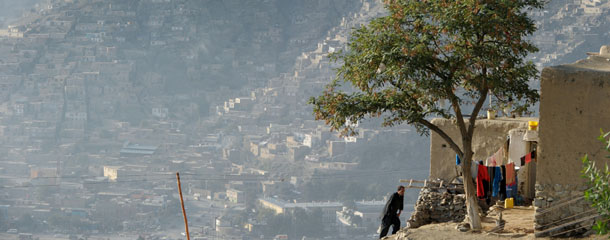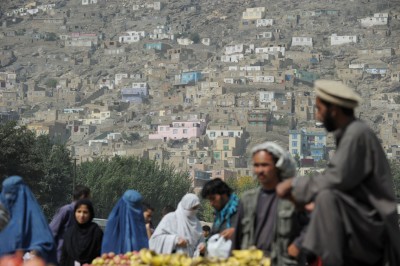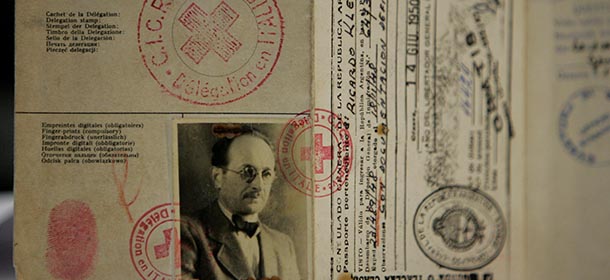Dalle colline di Kabul
Il reportage fotografico di Roberto Schmidt, tra la vita quotidiana in città e un affollato quartiere visto da una posizione insolita

altre
foto
A resident of the hillside neighborhood of Jamal Mina walks up to where he and his family live high above downtown Kabul on September 27, 2012. It is estimated that about 20 percent of the city’s more less than 5 million residents live on houses built on steep hills that surround the city. Running water was recently installed on some homes in this neighborhood but open sewers run down hill. According to the World Bank more than a third of the population of Afghanistan live below the poverty line, more than half are vulnerable and at serious risk of falling into poverty. AFP PHOTO/Roberto SCHMIDT (Photo credit should read ROBERTO SCHMIDT/AFP/GettyImages)
Roberto Schmidt è un fotografo che lavora per l’agenzia francese Agence France Presse. Dal 22 settembre è a Kabul e sta fotografando la vita di tutti i giorni in città: il mercato, le strade, i negozi, le case, una manifestazione di donne che chiedono diritti e una squadra di persone in tenuta arancione che puliscono un fiume urbano.
Oggi sono arrivate alcune immagini che mostrano Kabul dall’alto, in particolare la vista dal quartiere di Jamal Mina, dove si stima che viva circa il 20 per cento degli abitanti della città. Il quartiere ha parecchi problemi di servizi, soprattutto le fogne. Il punto di vista di queste immagini è insolito e interessante, mostra come la città sia arrampicata sulle colline e composta da piccolissime case quadrate affacciate sulla bella Pul-e Khishti, la moschea centrale.
Schmidt è nato a Bogotà, in Colombia, nel 1966. Subito dopo il diploma alla Scuola di comunicazione di Miami, ottenuto negli Stati Uniti nel 1989, ha iniziato a lavorare come fotoreporter e ha realizzato reportage in molte zone di conflitto in giro per il mondo. Di solito vive a Nairobi. Nel 2008 lavorò in Congo raccontando gli scontri armati tra i ribelli del Congresso Nazionale per la Difesa del Popolo (CNDP) e l’esercito congolese, concentrandosi soprattutto sui profughi. Nel marzo 2011 si trovava in Libia e nel primo giorno dei bombardamenti della NATO fu arrestato assieme a un corrispondente britannico, Dave Clark, e a un altro fotografo statunitense, Joe Raedle. Tutti e tre furono rilasciati quattro giorni dopo. Dave Clark racconta come andarono le cose sulla pagina Facebook dell’agenzia di stampa.





























